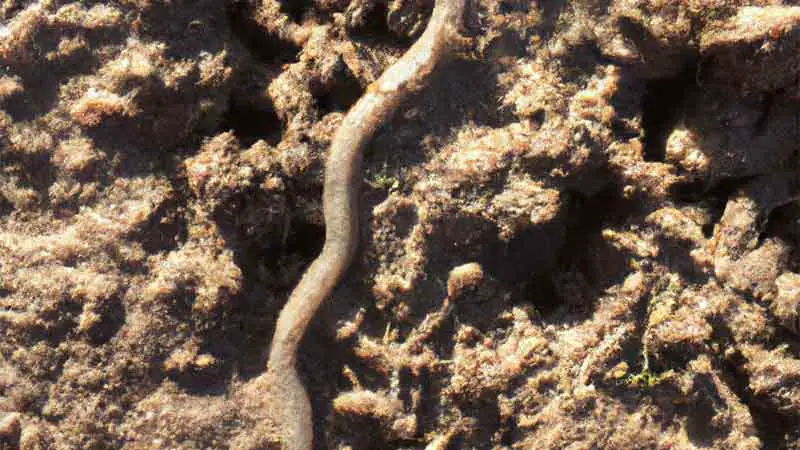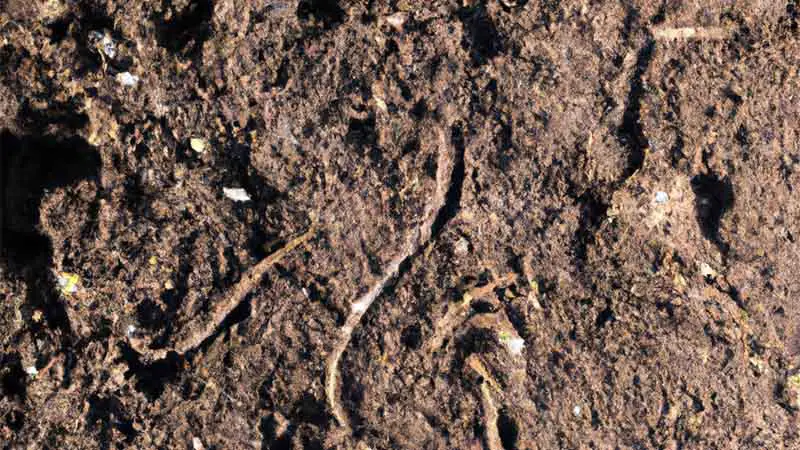Nematodes, though tiny and often overlooked, play an important part in the complex web of life that exists beneath our feet.. These microscopic worms are an integral part of soil ecosystems, contributing to various functions that are vital for the health and productivity of the soil. Understanding the functions of nematodes in soil is essential for sustainable agriculture, environmental conservation, and ecosystem management. We will delve into the five main functions of nematodes in soil, shedding light on their role in nutrient cycling, predation, soil structure, nutrient availability, and plant growth. By unraveling the significance of these functions, we can gain a deeper appreciation for the remarkable contributions nematodes make to the soil ecosystem and explore their implications for soil management practices.

Function 1: Nutrient Cycling
Nutrient cycling is a fundamental process in soil ecosystems, and nematodes play a crucial role in this intricate web. These microscopic worms are key players in the decomposition of organic matter. As nematodes feed on bacteria, fungi, and other microorganisms, they break down complex organic compounds, releasing essential nutrients into the soil. Through their feeding activities, nematodes accelerate the decomposition process, effectively recycling nutrients and making them available for plant uptake.
- One of the primary contributions of nematodes to nutrient cycling is their ability to mineralize organic nitrogen. By feeding on organic materials, nematodes release nitrogen in the form of ammonium, which can be readily utilized by plants. This process is particularly significant in nitrogen-limited soils, where nematodes act as important mediators in the conversion of organic nitrogen into plant-available forms.
- Additionally, nematodes also contribute to the cycling of other nutrients, such as phosphorus and carbon. As they consume organic matter, nematodes excrete waste products rich in phosphorus, aiding in the release of this essential nutrient into the soil. Moreover, by breaking down organic carbon compounds, nematodes promote carbon cycling, influencing soil organic matter dynamics and carbon sequestration processes.
- The impact of nematodes on nutrient cycling extends beyond their direct involvement in decomposition. Certain nematode species have mutualistic relationships with plants, forming symbiotic associations where they facilitate nutrient uptake. For instance, arbuscular mycorrhizal nematodes establish symbiosis with mycorrhizal fungi, enhancing the nutrient acquisition capabilities of plants, especially phosphorus. These specialized nematodes transport nutrients from the fungi to plant roots, improving plant growth and nutrient utilization efficiency.
Overall, the nutrient cycling function of nematodes is integral to maintaining soil fertility and nutrient availability. By participating in the decomposition of organic matter, mineralization of nutrients, and establishment of symbiotic relationships, nematodes contribute to the intricate balance of nutrient dynamics in soil ecosystems. Understanding and appreciating their role in this process can guide us in developing sustainable soil management strategies that promote efficient nutrient cycling and maximize agricultural productivity while minimizing environmental impact.
Function 2: Predation and Control of Pests
Nematodes exhibit a diverse array of feeding strategies, and some species play a pivotal role in the natural control of pests and insects in soil ecosystems. These predatory nematodes act as efficient biocontrol agents, helping to suppress populations of harmful pests and maintain ecological balance.
- Certain nematodes, known as entomopathogenic nematodes, are specialized predators of insect larvae and pests. These nematodes actively seek out and infect their prey by releasing bacteria from their digestive tracts, which quickly multiply and kill the targeted insects. By parasitizing and feeding on pest species, these nematodes contribute to the natural regulation of pest populations, reducing the need for chemical insecticides in agricultural systems.
- The effectiveness of predatory nematodes in pest control is influenced by various factors, such as the presence of suitable prey, environmental conditions, and nematode species specificity. Some nematode species exhibit a broad range of prey specificity, while others are more specialized and target specific pests. Understanding the interactions between nematodes and pests is crucial for harnessing their biocontrol potential effectively.
- Integrating predatory nematodes into pest management strategies can offer numerous benefits. Compared to chemical pesticides, nematodes are generally safe for humans, non-target organisms, and the environment. They have a low risk of developing resistance and can be compatible with other biological control agents. Additionally, nematodes can persist in the soil, providing long-term pest control effects.
- Nematodes are increasingly being explored as a sustainable alternative to conventional pest control methods. Their use in integrated pest management (IPM) programs, alongside other biocontrol agents and cultural practices, can help reduce reliance on synthetic pesticides, minimize ecological disruptions, and promote sustainable agricultural practices.
- However, it is essential to consider the specific requirements and conditions for successful implementation of nematode-based pest control strategies. Factors such as nematode application methods, timing, and environmental conditions need to be carefully considered to optimize their efficacy.
Nematodes’ role as predators and biocontrol agents in soil ecosystems offers a valuable and sustainable approach to pest management. By harnessing their natural predatory abilities, we can reduce the reliance on chemical pesticides, mitigate the negative environmental impacts associated with pest control, and promote a healthier, more balanced soil ecosystem. Continued research and practical applications of nematode-based pest control methods hold promising potential for achieving sustainable and ecologically friendly pest management systems in various agricultural and horticultural settings.

Function 3: Soil Structure and Aggregation
Soil structure and aggregation are critical aspects of soil health and play a significant role in determining its physical properties. Nematodes contribute to soil structure and aggregation through their interactions with other soil organisms and their activities within the soil matrix.
- Nematodes interact with bacteria, fungi, and other microorganisms in the soil, forming complex relationships that influence soil structure. For example, certain nematodes feed on bacteria, regulating their population sizes. This grazing activity helps control bacterial growth and promotes the formation of bacterial aggregates, which contribute to soil aggregation and stability.
- Nematodes also contribute to soil structure through their movements and burrowing activities. As they navigate through the soil, nematodes create channels and pores, enhancing soil aeration and water infiltration. Their burrowing can help loosen compacted soil, improving root penetration and nutrient accessibility.
- Moreover, nematodes play a role in the decomposition of organic matter, which can contribute to soil aggregation. As nematodes feed on organic materials, they break them down into smaller particles. The resulting organic residues can act as binding agents, helping to bind soil particles together and form stable aggregates.
- The presence of nematodes in the soil also influences the activity of other soil organisms, such as earthworms and microarthropods. Interactions between nematodes and these organisms can further enhance soil aggregation and structure. For instance, nematodes can facilitate the breakdown of fungal hyphae, promoting the incorporation of fungal biomass into soil aggregates.
- The impact of nematodes on soil structure and aggregation extends beyond their immediate activities. By improving soil structure, nematodes contribute to better water holding capacity, nutrient retention, and overall soil fertility. Enhanced soil aggregation also reduces soil erosion and promotes better root development, leading to improved plant growth and productivity.
- However, it is important to note that the effect of nematodes on soil structure can vary depending on factors such as nematode species, population densities, and environmental conditions. Some nematodes may have negative impacts on soil structure, particularly if their populations become too high or if they feed on beneficial soil organisms.
Nematodes play a significant role in shaping soil structure and aggregation through their interactions with other soil organisms, their burrowing activities, and their influence on organic matter decomposition. Understanding these contributions is crucial for maintaining healthy soil ecosystems, optimizing nutrient availability, and promoting sustainable agriculture practices. By considering the ecological roles of nematodes, we can develop strategies to enhance soil structure, improve soil health, and foster resilient and productive soils.
Function 4: Nutrient Availability and Plant Growth
Nematodes have a direct impact on nutrient availability in the soil and play a vital role in facilitating nutrient uptake by plants. Through their feeding activities, nematodes contribute to nutrient cycling, mineralization, and nutrient transformations in the soil, ultimately influencing plant growth and productivity.
- Certain nematodes, known as bacterial-feeding nematodes, play a significant role in the release of nutrients from organic matter. As they consume bacteria, nematodes break down complex organic compounds and release nitrogen, phosphorus, and other essential nutrients in plant-available forms. This process, known as mineralization, ensures a steady supply of nutrients to plants.
- Nematodes also contribute to nutrient availability through their interactions with mycorrhizal fungi. These beneficial fungi form symbiotic associations with plant roots and enhance nutrient uptake, particularly phosphorus. Some nematode species act as vectors for mycorrhizal fungi, helping to transport nutrients from the fungi to plant roots, thereby facilitating nutrient acquisition and promoting plant growth.
- In addition to mineralization and mycorrhizal interactions, nematodes influence nutrient availability by altering soil microbial communities. As nematodes consume bacteria and other microorganisms, they can indirectly affect the composition and activity of the soil microbiota. Changes in the microbial community can impact nutrient cycling processes, such as the release and availability of nitrogen, phosphorus, and other essential elements.
- The presence of nematodes in the soil can also influence plant growth and development through their interactions with plant roots. Some nematodes establish mutualistic associations with plants, promoting root growth, nutrient uptake, and overall plant health. These beneficial nematodes stimulate root elongation, increase nutrient absorption capacity, and enhance the tolerance of plants to biotic and abiotic stresses.
- However, it is important to note that not all nematodes have positive effects on nutrient availability and plant growth. Some nematode species are plant parasites, causing damage to plant roots and negatively impacting nutrient uptake and plant health. The balance between beneficial and detrimental nematodes in the soil is crucial for maintaining optimal nutrient availability and plant growth.
- Understanding the role of nematodes in nutrient availability and plant growth is essential for sustainable agriculture and soil management practices. By considering the ecological interactions between nematodes, plants, and soil microorganisms, we can develop strategies to enhance nutrient cycling, optimize nutrient availability, and promote plant growth in a balanced and sustainable manner.
Nematodes significantly influence nutrient availability in the soil and play a crucial role in supporting plant growth and productivity. Through their involvement in mineralization, mycorrhizal interactions, microbial community dynamics, and beneficial associations with plants, nematodes contribute to the efficient uptake and utilization of nutrients by plants. By understanding and harnessing the positive contributions of nematodes, we can develop effective strategies to enhance nutrient availability, improve plant growth, and achieve sustainable agricultural systems.
Function 5: Indicator Species and Soil Health
Nematodes serve as valuable indicator species for assessing soil health and the overall condition of soil ecosystems. The composition, diversity, and abundance of nematode communities can provide insights into soil quality, ecosystem functioning, and the impacts of land management practices.
- Different nematode species have specific ecological preferences and tolerances, making them sensitive to changes in soil conditions. Monitoring the nematode community structure can reveal shifts in soil health parameters such as nutrient availability, organic matter content, soil moisture, and compaction.
- Nematodes act as bioindicators, reflecting the effects of various land management practices and environmental disturbances. For example, the dominance of certain nematode groups, such as plant-parasitic nematodes, may indicate imbalances in the soil ecosystem or the presence of plant stress factors.
- The analysis of nematode diversity and community structure can provide information about the overall biodiversity and ecological functioning of the soil ecosystem. A diverse nematode community with a balanced composition is often associated with healthier and more resilient soils.
- Changes in nematode abundance and diversity can be used to assess the impacts of agricultural practices, such as pesticide applications, tillage methods, and crop rotations. Certain management practices, such as organic farming or cover cropping, are known to positively influence nematode communities by promoting higher diversity and abundance of beneficial nematodes.
- Nematode assessments can also be used to identify soil health issues and guide soil management decisions. For instance, the presence of certain nematode groups may indicate the need for specific interventions, such as implementing biocontrol strategies or adjusting nutrient management practices.
- Furthermore, nematodes can be utilized in the development of soil health indices and diagnostic tools. The integration of nematode data with other soil health indicators can provide a comprehensive assessment of soil conditions and guide sustainable land management practices.
By considering nematodes as indicators of soil health, we can make informed decisions to improve soil management, promote biodiversity, and enhance ecosystem resilience. Monitoring nematode populations over time can help assess the effectiveness of soil conservation practices and guide the implementation of targeted interventions.
Nematodes serve as indicator species, reflecting the health and functioning of soil ecosystems. The analysis of nematode communities provides valuable insights into soil conditions, land management practices, and ecosystem dynamics. Incorporating nematode assessments into soil health monitoring programs can contribute to sustainable soil management, biodiversity conservation, and the promotion of resilient agricultural systems.
Conclusion
Nematodes, with their diverse functions in soil ecosystems, play a critical role in preserving soil health and productivity. From nutrient cycling and predation to soil structure and aggregation, nematodes have a significant impact on the overall functioning of the soil. Their contributions to nutrient availability, plant growth, and their role as indicator species for soil health cannot be overstated. Understanding the intricate interactions between nematodes, soil microorganisms, and plants allows us to develop sustainable soil management strategies that optimize agricultural productivity while preserving the integrity of the environment. By recognizing the importance of nematodes and their multifaceted functions, we can foster healthy and resilient soil ecosystems, ensuring the long-term sustainability of our agricultural systems and the preservation of our natural resources.
